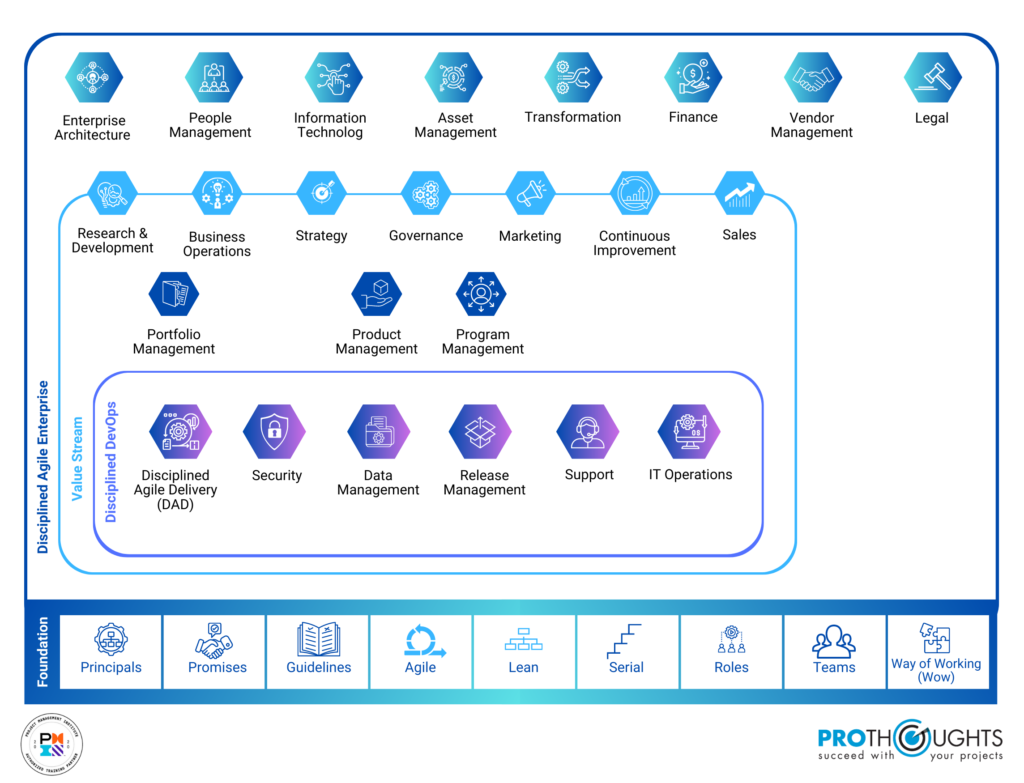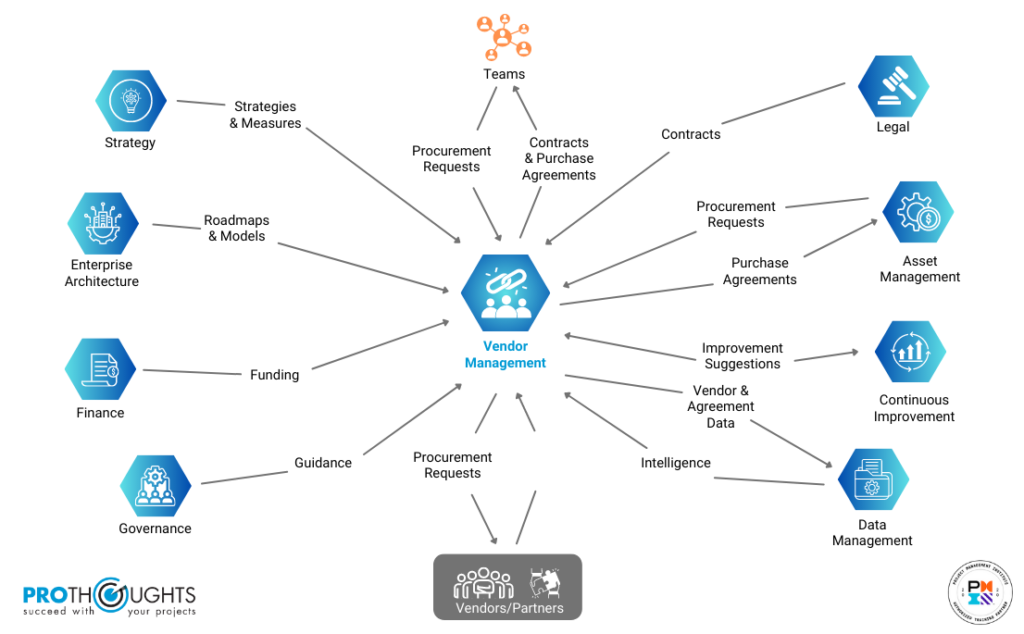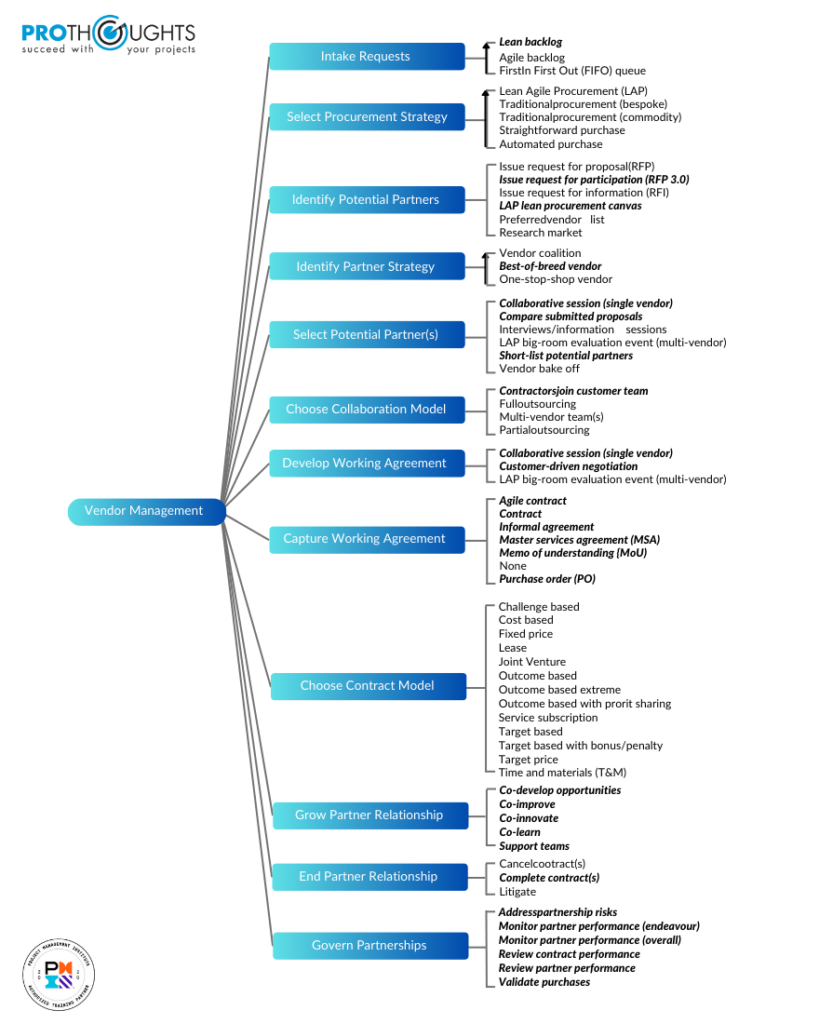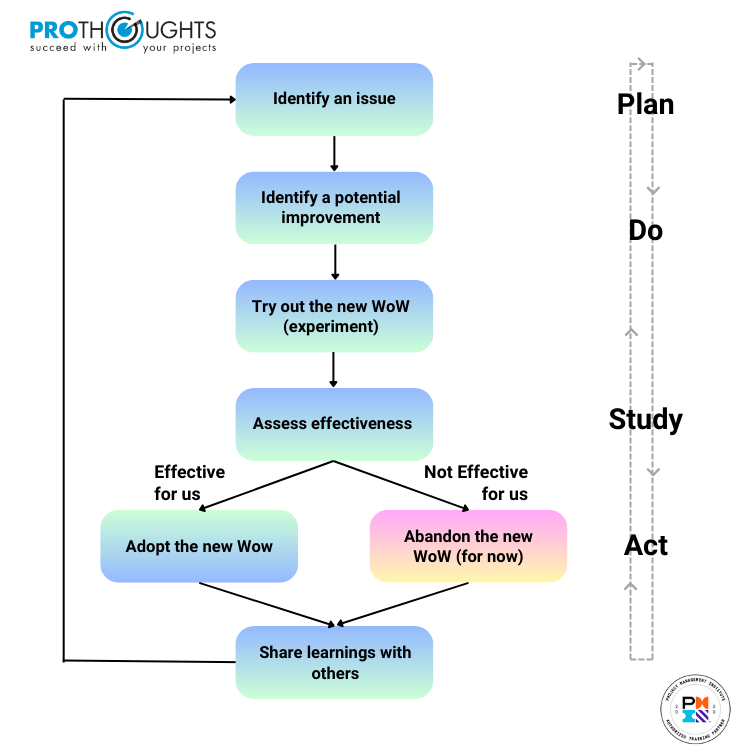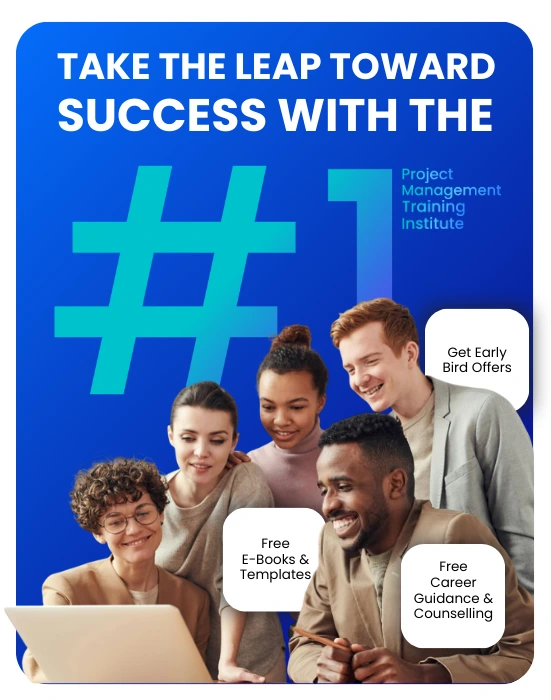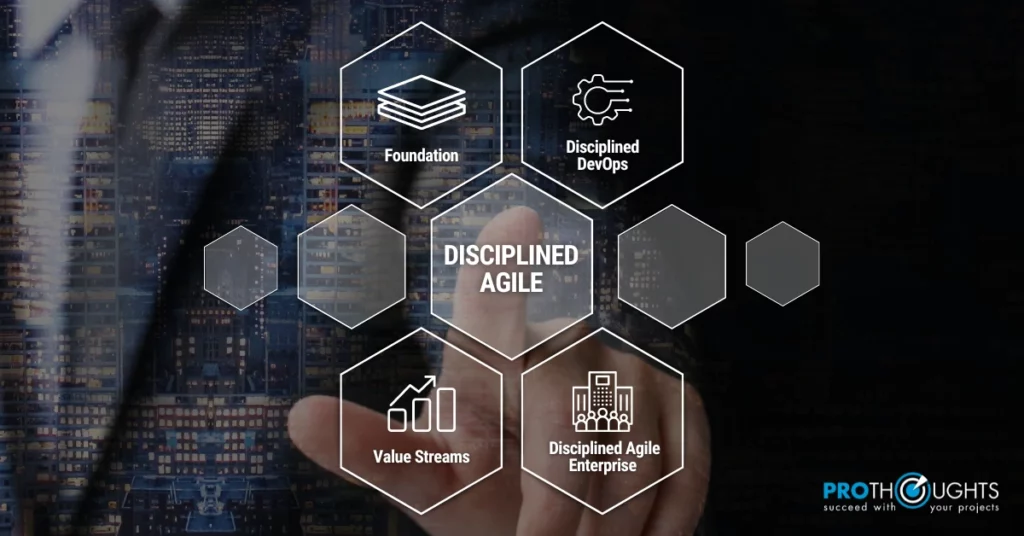
Disciplined Agile is seeing rapid mainstream adoption today. A lot is still unknown about it because of the lack of institutes that provide the certification course. There are limited resources that discuss the minute yet important details of the subject. ProThoughts is one of the leading brands that provide courses for disciplined agile, apart from the Project Management Institute (PMI) itself. We started on this knowledge series as a means to spread more information about Disciplined Agile in simple and easy-to-digest terms. At ProThoughts, our motto has always been to deliver knowledge in the best way possible. So here we are, discussing the most important aspect of Disciplined Agile – The Disciplined Agile Toolkit. Let’s get started!
What Is The Disciplined Agile Toolkit?
Disciplined Agile (DA) is a toolkit that provides a flexible and context-sensitive approach to agile and lean practices. It is a hybrid framework that combines various practices and techniques from agile, lean, and traditional project management to provide a pragmatic approach to project development and delivery. In addition, the toolkit is based on the philosophy that there is no one-size-fits-all approach to agile and that organizations need to tailor their approach to their specific context and situation. We have shown the disciplined agile onion chart in the figure below.
The Disciplined Agile (DA) toolkit is designed to be flexible and adaptable, allowing organizations to tailor their approach to their specific context and situation. It is also scalable, meaning it can be used by organizations of all sizes, from small teams to large enterprises. Finally, the toolkit is supported by a community of practitioners who share their experiences and insights to help others improve their implementation of the framework. Thus, by using the Disciplined Agile Toolkit, organizations can improve their project development and delivery process, increase efficiency, and deliver more value to their customers.
The Architecture Of Disciplined Agile Toolkit
Views In The Disciplined Agile Toolkit
Views in the Disciplined Agile Toolkit provide a structured way of looking at the various components and practices of Disciplined Agile (DA). There are four views in the Disciplined Agile (DA) Toolkit:
- Mindset
- People
- Flow
- Practices
We will look into the details of each view below:
Mindset: This view addresses the question: How do you think?
Disciplined Agile describes these via principles, promises, guidelines, and philosophies. Disciplined agile practitioners must follow certain principles and must commit to their promises while adhering to the guidelines set by DA. Each disciplined agile process blade further extends these principles, promises, and guidelines with certain philosophies that are specific to that process blade.
| The Eight Principles Of Disciplined Agile | The Promises Of Disciplined Agile | The Guidelines For Disciplined Agile |
|---|---|---|
| These are values that disciplined agilists believe in. | These are the agreements that disciplined agilists make with their teammates and stakeholders. | These are the rules that disciplined agilists must follow while adopting DA. |
| 1. Delight Customers 2. Be Awesome 3. Context Counts 4. Be Pragmatic 5. Choice Is Good 6. Optimize Flow 7. Organize Around Products/Services 8. Enterprise Awareness | 1. Create psychological safety and embrace diversity 2. Accelerate value realization 3. Collaborate proactively 4. Make all work and workflow visible. 5. Improve predictability. 6. Keep workloads within the capacity 7. Improve continuously. | 1. Validate our learnings. 2. Apply design thinking. 3. Cater to relationships through the value stream. 4. Create effective environments that foster joy. 5. Change culture by improving the system. 6. Create semi-autonomous self-organizing teams. 7. Adopt measures to improve outcomes. 8. Leverage and enhance organizational assets. |
Here is an example of philosophies for the vendor management process blade:
- Value through partnerships.
- Collaborative partnerships.
- Mutually beneficial partnerships.
- We co-create with our partners.
- We are trusted advisors.
- Organizational outcomes come first.
- We protect our organization.
- We address risk holistically.
People: This view addresses the questions: Who are you? And how are you organized?
The People view highlights the roles and responsibilities, team structures, and organizational structures. For example, for the vendor management process blade, the roles are vendor manager, procurement manager, and procurement specialist. These three roles are marked with a set of responsibilities assigned to them. To elaborate, vendor managers cultivate relationships with vendors and have the signing authority for your organization. The procurement managers lead the procurement process. They carry out the initial requisition, vendor selection, negotiations, and invoice payments. Further, the procurement specialist focuses on the procurement of a specific category of product or on a certain geographic locale. Procurement specialists report to the procurement manager and are sometimes called Purchasing agents or Purchasing clerks.
Flow: This view addresses the question: How do you work together?
Flows, also called workflows or process flows, are captured as life cycles or workflow diagrams. The disciplined agile process blades describe the business flow or the business process. Forming the business flow is a starting point for organizations new to agile WoW as per that specific process blade. For example, for the vendor management process blade, the high-level workflow depicts how your vendor management efforts support teams in engaging with vendors. The workflow for the vendor management process blade is shown in the figure below.
Practices: This view addresses the question: What do you do?
DA is built on the idea that there is no single solution, approach, or framework that works for every situation in an enterprise. A collection of industry-best practices is not always the right way to go. This is why the Disciplined Agile (DA) toolkit has come up with hundreds of potential practices that you can adopt. Your goal will be to choose the most appropriate techniques given the context of the situation that you face. To guide you in making decisions for your context, the DA tool kit provides process goal diagrams so that you can easily navigate your choices. Continuing on our example of the vendor management process blade, the process goal diagram for the same is shown below.
Each view of the Disciplined Agile Toolkit provides a different perspective on the project development process, and they are all interconnected. With these Views in the Disciplined Agile Toolkit, organizations can take a holistic and structured approach to value delivery, resulting in more efficient outcomes to meet enterprise goals.
Layers Of The Disciplined Agile Toolkit
The Layers of the Disciplined Agile Toolkit provide a high-level overview of the various components and practices of Disciplined Agile (DA). The Disciplined Agile (DA) toolkit consists of four layers: Foundation, Disciplined DevOps, Value Streams, and Disciplined Agile Enterprise (DAE). Each layer of the Disciplined Agile Toolkit builds on the previous layer, and organizations can adopt and implement the layers in a phased and iterative manner. To summarize, the Foundation layer provides the core principles and practices of DA. Whereas, the other layers help organizations to scale and tailor DA to meet their specific needs and context. Let’s look at all the layers of the Disciplined Agile toolkit in detail:
Foundation:
This layer provides the fundamental concepts, principles, and practices of Disciplined Agile (DA). It includes the DA mindset, the DA principles, and the DA roles and responsibilities. In essence, the foundation layer is the starting point for organizations that want to adopt and implement DA.
Disciplined DevOps:
This layer focuses on integrating development and operations to support the continuous delivery of software. It includes practices for collaboration, automation, and continuous improvement. The Disciplined DevOps layer helps organizations to improve their software delivery process by reducing cycle time, improving quality, and increasing efficiency.
Value Streams:
This layer focuses on optimizing the flow of value from idea to delivery. It includes practices for defining, managing, and improving value streams, and for measuring and monitoring value delivery. The Value Streams layer helps organizations to align their software development efforts with business objectives and to continuously improve their value delivery.
Disciplined Agile Enterprise (DAE):
This next layer focuses on scaling as well as tailoring DA frameworks to meet the needs of large, complex organizations. It includes practices for enterprise-level governance, portfolio management, as well as collaboration across multiple teams and value streams. The DAE layer helps organizations adopt a disciplined and agile approach to software development and delivery across the entire enterprise.
Process Blades In The Disciplined Agile Toolkit
In the Disciplined Agile (DA) toolkit, process blades are a set of focused process improvement efforts that are designed to help organizations achieve specific objectives. Organizations can choose the process blades that are most relevant to their needs and context, and they can adapt the practices and tools to suit their specific situation. Moreover, by using the Disciplined Agile process blades in project management, organizations can improve their project delivery, reduce waste, as well as continuously improve their processes.
How To Apply The Disciplined Agile Toolkit To Improve Your Way Of Working?
So far, we have understood the theoretical aspects of the disciplined agile toolkit. But how do you really apply it to real-world cases? It’s easier said than done because each situation has its own unique challenges, and thus there is a need to construct a unique solution to tackle it. The most fundamental thing that DA addresses is that there are no “best practices” that work for every context.
Every practice has its own tradeoffs that might work well in some cases but not in others. DA addresses the fact that even if a certain framework worked for you in the past, it might work poorly in your current scenario. The DA principle: Context Counts addresses just this point. Moreover, the biggest setback remains that you can’t really know if a solution works until you apply it. So the question remains – How does one apply the DA toolkit? Well, PMI has come up with a DA technique called “Guided Continuous Improvement” (GCI).
The GCI Approach To Apply The Disciplined Agile Toolkit
GCI follows an iterative approach to improve the Way Of Working through small increments. It is based on lean approaches like Gemba Kaizen and Plan-Do-Study-Act (PDSA). We have shown the process flow of GCI in the image below. We have also mapped it to the PDSA method. GCI is one of many improvement techniques taught in our Disciplined Agile (DA) certification training batches. The method follows a flowchart, as depicted in the image.
The flowchart starts with identifying an issue or impediment in the project, then moves on to finding a possible improvement strategy to resolve it. These two steps are in parallel with the Plan and Do phases of the PDSA, respectively. Further, the team must try out the brand-new Way Of Working and assess its effectiveness. This marks the Study Phase of the PDSA. If it works then the team can adopt the new WoW, and if it doesn’t, they can abandon it and follow the same loop and document their learnings. This marks the final Do phase of the PDSA. The basic idea behind GCI is a classic continuous improvement loop that works via an iterative application of the Disciplined Agile toolkit.
Why The GCI Method Works For Enterprises
More often than not, what happens is teams with a lack of process knowledge apply a solution to the issue that is either trending or something that worked in another scenario. In this case, there is no guarantee that the method working in the context of the project. In the case of real-world projects, the trial and error method isn’t exactly the best to implement because of the huge resource loss each test can bring about. With the lack of a good disciplined agile coach, the team might lose sense of direction and waste a lot of money and time on the wrong methods.
With the DA toolkit, the teams can adopt practices that have a higher chance of success in the given scenario. Before teams can start implementing DA practices, it is important to understand the guiding principles and goals of the toolkit. This will help teams align their efforts with the overall objectives of the framework. In addition, the DA toolkit also ensures that they are working towards the right outcomes.
The Disciplined Agile toolkit takes into account the process goals, process blades, and different contexts to form a comprehensive guide. Teams can leverage this comprehensive guide with a little bit of training that the DASM and DASSM certification training programs carry out. You might still make mistakes and, at times, choose strategies that aren’t the most optimal for your context. Regardless, you’ll have fewer failures because you’ll be making informed decisions with the DA toolkit, knowing what to experiment with, which in turn leads to a faster improvement rate and saves your resources too.
Why Is It Important To Have A Standard Architecture Of The DA Toolkit?
Consistency: The standard architecture helps to present the DA tool kit in a consistent manner.
Consumability: As the consistency within the DA toolkit increases, it becomes easier to work with, understand, and apply to projects.
Extensibility: The DA tool kit is continually evolving, and as a result, it is important that it is easy to update and extend.
The Disciplined Agile Journey
To learn how to apply disciplined agile to your projects, PMI has developed a chain of courses for you. These courses range from a beginner’s level to an expert level. The disciplined agile journey starts with the Disciplined Agile Scrum Master (DASM) certification. This course requires no previous knowledge of agile and deals with the basics of DA. The next course in the chain is the most important. It is the Disciplined Agile Senior Scrum Master (DASSM) certification.
DASSM deals with the intricacies of the DA toolkit so that you can successfully apply the concepts and come up with the best Way of Working (WoW) for your enterprise. You can check your eligibility for this course using our DASSM eligibility calculator. This course forms the prerequisite of the two advanced level certifications – The Disciplined Agile Coach (DAC) and the Disciplined Agile Value Stream Consultant (DAVSC). DAC is for those practitioners who wish to coach teams into agility. On the contrary, a DAVSC-certified individual leads transformations and handles the decision-making to produce maximum value out of projects.
Conclusion
In conclusion, this comprehensive guide hoped to cover everything about the disciplined agile toolkit. Right from what is the disciplined agile toolkit to its architecture and the reasons why the toolkit plays an important role in achieving enterprise agility – we deep-dived into each of these subjects. Moreover, in our oncoming guides, we will provide an in-depth analysis of more such parts of the toolkit. To become a disciplined agile practitioner and lead your teams to success, enroll in the Disciplined Agile Scrum Master (DASM) course today!
